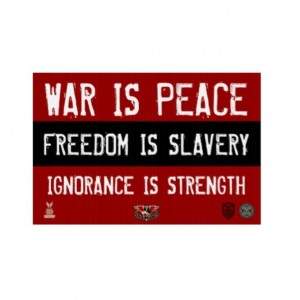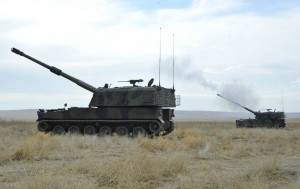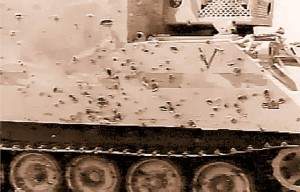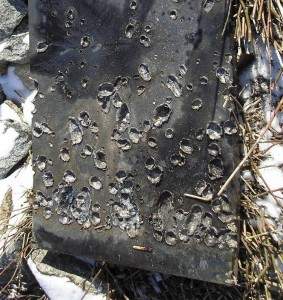Analyses by idiots make everything worse
April 16, 2024 by Thomas Wictor
Every day I read analyses that are so off base that they make me want to dive through my computer and choke somebody’s turkey neck until he gobbles, to quote novelist Joseph Wambaugh. Almost everything being published is wrong. The problem is caused by the notion that there’s no such thing as objective truth. Social media compounds this lunacy. Look what people post.
No sources. Yet this stuff is picked up by the mainstream press and repeated. That’s why the west is so misinformed. Social media is full of cranks with irrational idées fixe. And now, so are the mainstream media, academia, punditry, and politics.
Analyses for imbeciles
Reporters weren’t happy with the damage they did to their craft by deciding that there’s no such thing as objective truth. To complete the job of destroying themselves, they adopted the concept of “accountability journalism”: Every story must have a villain and a victim. Associated Press Senior Vice President and Executive Editor Kathleen Carroll said in 2013 that journalists must ask certain questions.
How are you going to stop it? Or start it?
The How questions get into the plumbing of what happened, where you can explore how it might have been prevented, how previous efforts to stop it worked (or didn’t), how officials plan to seek remedies or solutions. And later, you can go back and ask how those solutions are coming along.
Answering those HOW questions, and all the others that follow, are where journalists prove their greatest value to society.
That’s not the job of journalists. They’re supposed to just tell us what happened. But Kathleen Carroll is a social justice warrior.
She’s every single stereotype rammed into one poor body.
Because of analyses from people like her, we’ve become an Orwellian Opposite World.
But not all of us are imbeciles.
Analyses based on observation
It’s been reported many times that Turkey has used its T-155 Fırtına self-propelled howitzers to shell the Kurdish People’s Protection Units (YPG) in northern Syria.
I’ve never found physical evidence that this is true. Battle-damage assessment (BDA) from photos and videos indicates the use of mortars and rockets, not 155mm high-explosive artillery rounds. This is what you’d see where the Turkish rounds landed.
Not only did I see no evidence that the Turks were shelling the Kurds, there was this.
QUESTION: What’s the role of the Turkish Government in this fight? Because today Turkish prime minister said that 200 ISIS militants will be – are killed as a result of the Turkish artillery shots against ISIL targets. Are they supporting this offense against ISIL target in Manbij Pocket?
COL WARREN: Well, we’ve seen the Turkish fire some artillery to very good effect in the Manbij Pocket. We’re continuing to work with the Turks to tighten up our coordination with them on these artillery strikes that they do in that area, but yes, they are targeted.
So we’ve identified is the Turks filling a need, right? There were some weather problems; we were having difficulty providing the type of air power we wanted to provide, and the Turks filled in with artillery fire. So it was perfect. It happened the way it was supposed to happen.
This is the area we’re talking about.
While everyone was saying that the Turks were dropping artillery shells on Kurds to keep them from advancing, in reality the Turks were providing artillery support for the Kurdish ally Jaysh al-Thuwar, a component of the Syrian Democratic Forces (QSD).
The men who carry out the major combat operations of Jaysh al-Thuwar are Arab and allied professional strategic special operators. They have equipment that includes unidentified automatic cannons.
And they’re armed with new weapons called EMPFAE ordnance.
On top of that, the men show a level of military skill that rivals that of the best First World armed forces. When they fire on the run, their rifles remain stationary relative to the target.
I thought that the Arab League, Turkey, and the Kurds had worked out a solution that they were implementing clandestinely.
Guess what?
Analyses that hit the bullseye
On April 3, 2016, the Arab press announced that I was correct. It’s impossible for me to translate this into English, but here’s the gist.
The hurried meeting which brought together President Recep Tayyip Erdogan and his American counterpart Barack Obama in Washington on the sidelines of the Nuclear Security Summit underscored the point that the extensive American-Russian collaboration in Syria, especially on the side of the Kurds, has convinced Ankara to abandon previous policies of opposition.
I’ll let journalist Kamal Sheikho explain it more cogently.
Kurdish political writer and analyst Farouk Hajji Mustafa, director of Bercav Center for Freedoms and Media, told Al-Monitor, “IS is spending its last days in the north of Syria.” He believes that this was shown through the latest US-Turkish agreement, leaked to the media on April 3. He said, “Turkey allowed the Syrian Democratic Forces to advance in northern Syria, provided that they do not advance toward Azaz, Mare and the Syrian opposition strongholds in northern Aleppo countryside.”
Social media is full of dire, unsourced accounts of Kurds battling other Syrian rebels in this area. Here’s what the Pentagon says.
Q: Quick on the Manbij Pocket. Have you seen any evidence of fighting between Kurdish forces and Arab forces of—backed by the West?
COL. WARREN: We’ve not seen anything significant. You know, there is always friction on the battlefield. There are some very ancient animosities through that region. Certainly, those have to be accounted for, certainly those will show themselves from time to time as different groups brush up against each other in the course of pursuing and fighting ISIL.
So, we do see some of this. But we don’t see it as a problem. This is battlefield friction that we’re able to account for and work through.
In northern Syria, Arab League and allied strategic special operators are fighting Islamists. Kurds and everyone else willing to live and let live are protected.
Analyses to renew your faith
The Kurdish Left Party recently held a march to protest the violence against Turkish Kurds and those in the Sheikh Maqsoud neighborhood of Aleppo. Most of the video is speeches, but you should know that these people were very heavily guarded.
First, we see birds.
They flap their wings and go in and out of the altostratus clouds. The lowest altostratus clouds are 6500 feet (2400 meters) off the ground, meaning those “birds” are gigantic.
It’s time to talk about what’s in the air over Yemen, Syria, and Iraq.
There’s no sense of scale in the sky. You can’t tell a real bird from a very large robot that fires Flying Black Boxes of Death.
Back to the protesters.
All those women and children are protected by Arab special forces. Here’s the commander of the detachment.
Lanky, incredibly fit, and walking with his arms held out from his sides. He’s a Saudi.
Another.
The commander turns and gives a quick hand signal to his men.
Two soldiers make eye contact, acknowledging the order.
Skinny, head swiveling in all directions, hand on his box of tricks. He’s another Saudi special operator.
Another, positioned perfectly, holding his machine gun down against his left leg.
Another, watching and ready to pull God knows what from under his jacket.
The red arrow below marks the bravest man of all. He’s openly armed with a rifle in order to draw fire. His job is “reconnaissance by death.” He’s there to take bullets so that his comrades (green arrows) will know who to kill.
As the march reaches its destination, the detachment commander brings up the rear.
He never relaxes for even a second.
This is why the detachment of special forces did what they did.
She deserves a life free from terror, so the special operators will protect her, even if it means giving up their own lives.
They’re truly great men.
This article viewed 1117 times.






